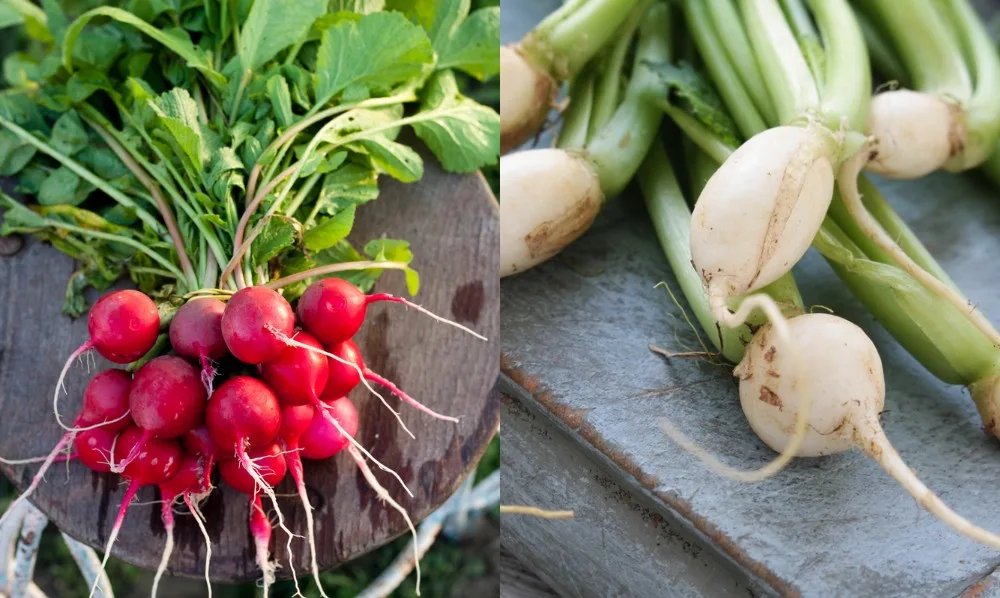
Gardening is often about thinking long-term. One of the key strategies in successful garden design and implementation is observing, waiting, and taking slow and small steps towards long-term growth.
But just because we plan ahead and think for the long haul, that does not mean that we cannot see some results much more quickly.
In this article, we’ll explore how you can eat food you have grown yourself faster than you may imagine.
We’ll talk about seeds to sow for food in less than a month, and other strategies to get food onto your plate in just a matter of weeks.
What You Need To Get Started
Most of the seeds you sow at this time of year in most temperate climates will be sown under cover or indoors, inside your home. You do not even have to have a garden in order to get started. In order to get started quickly with growing your own, you will need:
- Seeds
- Containers
- Growing medium (soil/ compost) (Though certain seeds can even be grown with just paper and water, as you will find out below.)
Seeds
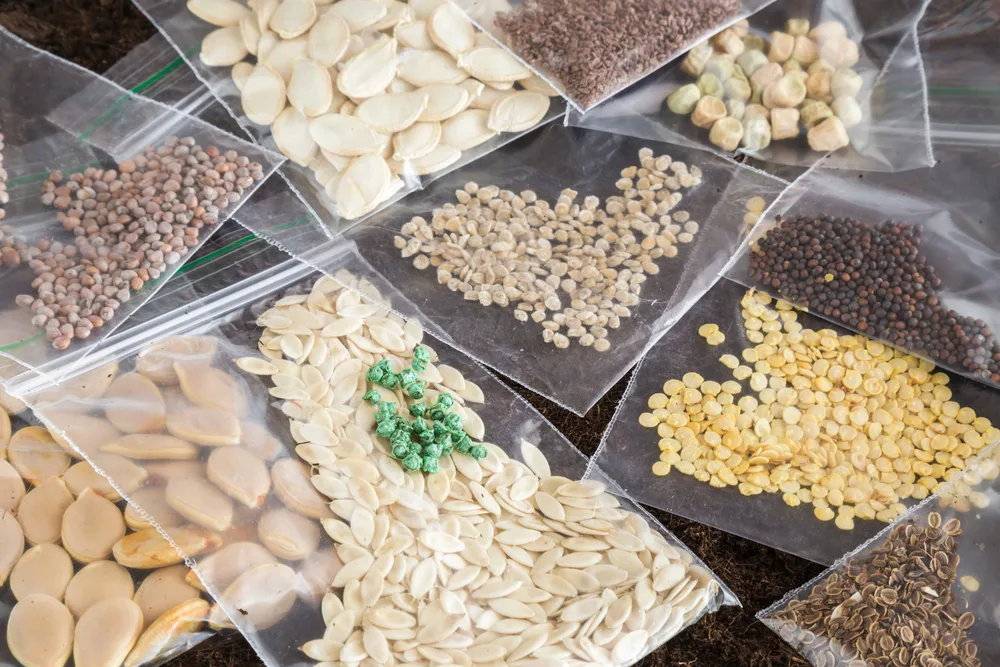
Think about how you might be able to gather the things you need. Seeds are often the only thing you need to buy. But even these can sometimes be found for free from friends, neighbors or your wider community.
Take a look at our guide about the best types of garden seeds and the best places to source them here.
Saving your own seeds is the most economical way to start growing food, but that can only happen in your second year of gardening. Here’s a guide for saving tomato seeds to regrow next year.
Containers
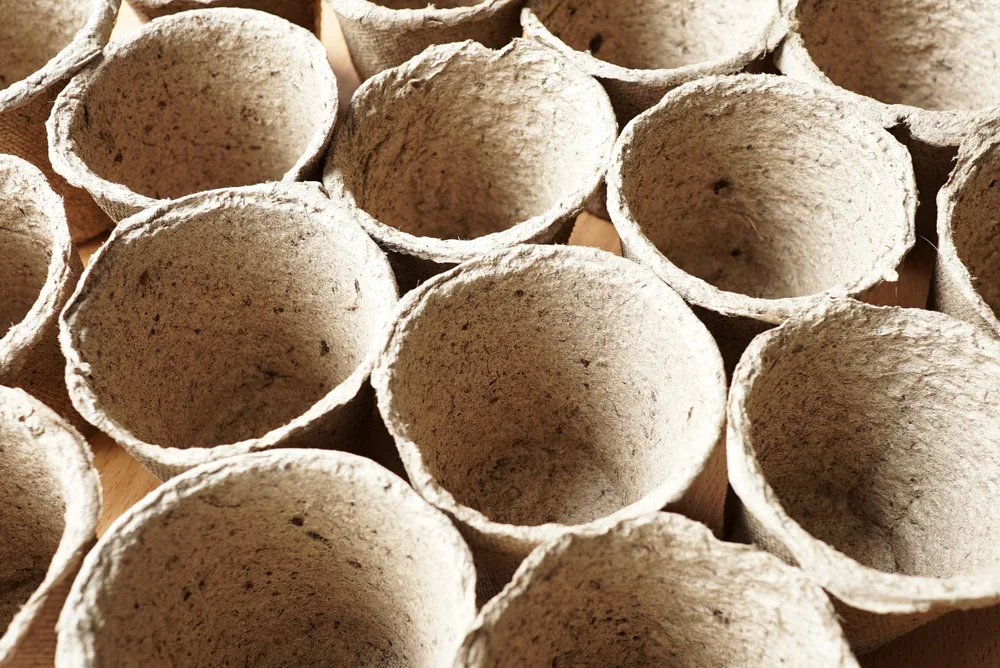
Containers can come in a range of shapes and sizes. Likely, you already have the things you need inside your home.
Think about using plastic food packaging such as pots and trays, toilet roll tubes and cardboard boxes, old kitchen pots and pans,… or even more unusual options like upcycled footwear that you can no longer wear.
Use your imagination and you will find that you already have plenty of container options available to you.
If you plant to later transplant your seedlings into the ground, the consider the below biodegradable options to reduce your impact on the planet and to make transplanting easier.
Growing Medium/ Potting Mix
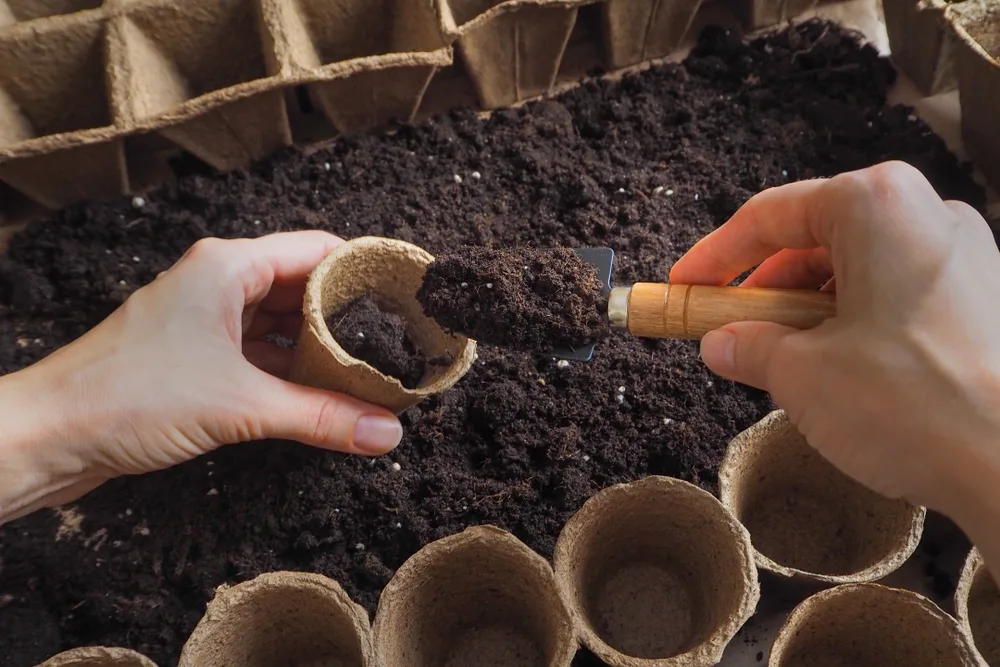
If you do not already have a composting system in place at home – get one started right away. It is easier than you might imagine to compost your own food waste. Whether or not you have a garden, there are plenty of techniques that you can use.
If you have to buy compost to get started, be sure to choose a peat-free option. A small bag will go a long way.
You can mix this with soil from your garden or nearby area. Leaf mold, if you have access to some, is another great ingredient to add to your home-made potting mix.
As mentioned above, if you don’t have compost/ potting mix, kitchen paper or even toilet paper can work for some of the fast growing seeds you can grow.
Tips for Seed Sowing
Sowing a few edibles on a windowsill or elsewhere on your property is easy. You do not need to know a lot about gardening to give it a go. Even the least green-fingered among us can grow a few plants to supplement our diets. But there are a few basic things to bear in mind:
Choose the Right Location To Sow Your Seeds
Where exactly you choose to sow and grow your fast-growing edibles will depend on where you live. In cooler climes, it is likely that you will sow them indoors or in an undercover growing structure this early in the spring. You might grow them:
- On a windowsill (a south facing window is ideal, but east and west facing windowsills can also work well.
- In an indoors vertical garden on a sunny wall/ shelving inside your home.
- Inside a greenhouse or polytunnel (on staging/ shelving or directly in the ground in this protected growing zone).
- In a sheltered and protected cold frame, cloche or hot bed structure.
Generally speaking, the warmer and more protected the area, the more quickly the seedlings mentioned below will grow.
Provide the Right Conditions for Germination
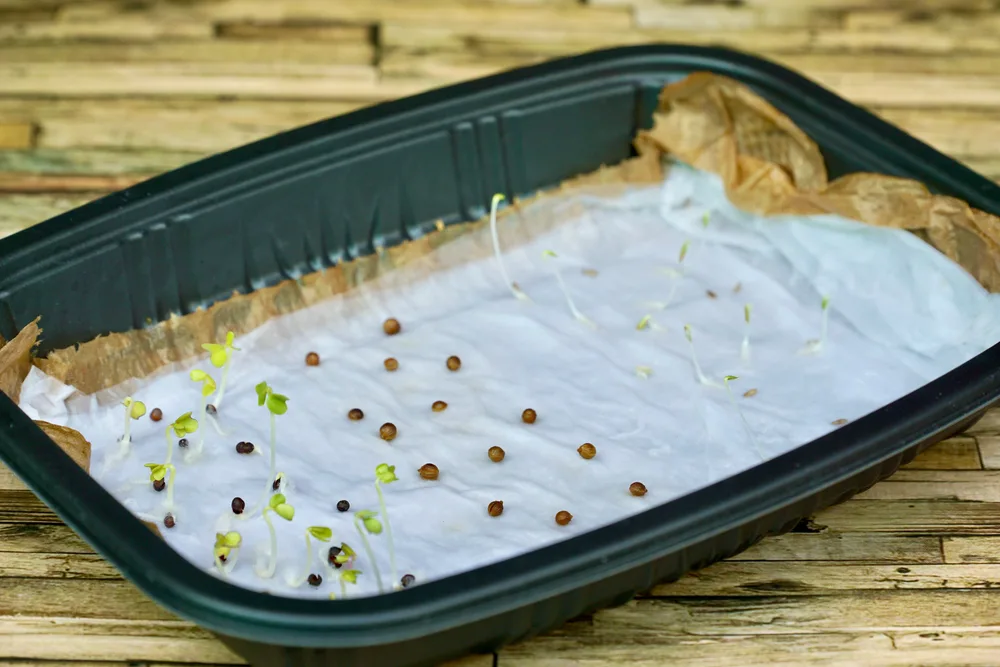
It is important to understand that seed germination requires certain prerequisites to be met. Seeds need the right temperatures, water and oxygen to germinate and begin to grow. Information often included on seed packets will help you out.
Give Your Seedlings a Good Start in Life
You also need to think about how you will care for your young seedlings over time. For fast-growing seeds, as long as they get enough sunlight, and are kept at the right temperatures, water is the only thing you’ll need to think about.
If possible, you should try to water your seeds with rainwater. Rainwater is better than water from the faucet for watering your seedlings, especially if you are on a municipal supply. If you do not already harvest rainwater from your roof – now is a great time to get started. If you do use tap water, it is best to leave it in a watering receptacle over night before using it to water your seedlings.
With some of the options listed below, you can also consider growing them on for longer. Pricking out seedlings and potting them up or planting them out can allow them to continue growing into larger, full-sized plants.
Why Sow Seeds For Fast-Growing Edible Plants?
Sow seeds for fast-growing edible plants and you could be supplementing your stores with home-grown food in next to no time. Nutrient dense and good for you, these small leafy greens and other salad crops can be a boon for you and your household.
The food you can grow obviously won’t give you all the calories you need to survive. But they should take you a lot further down the road to self-reliance. Sowing a few seeds now can help you supplement your diet with fresh greens and a few other salad crops within as few as four weeks time.
Growing these plants will not only give you a few extra calories and plenty of nutrients, the quick results can also give you a much needed boost to morale. As you grow in confidence and learn more about growing your own, you can also think about sowing and growing a range of other crops for you and your family.
15 Seeds To Sow Now For Quick Results
There are also plenty of other seeds you could be sowing now for harvests later in the year and a number of seeds you can sow now to enjoy for years or decades. But here are 15 seeds to sow now that could give you at least a small edible harvest in around a month:
1. Cress (Lepidium sativum – L.)
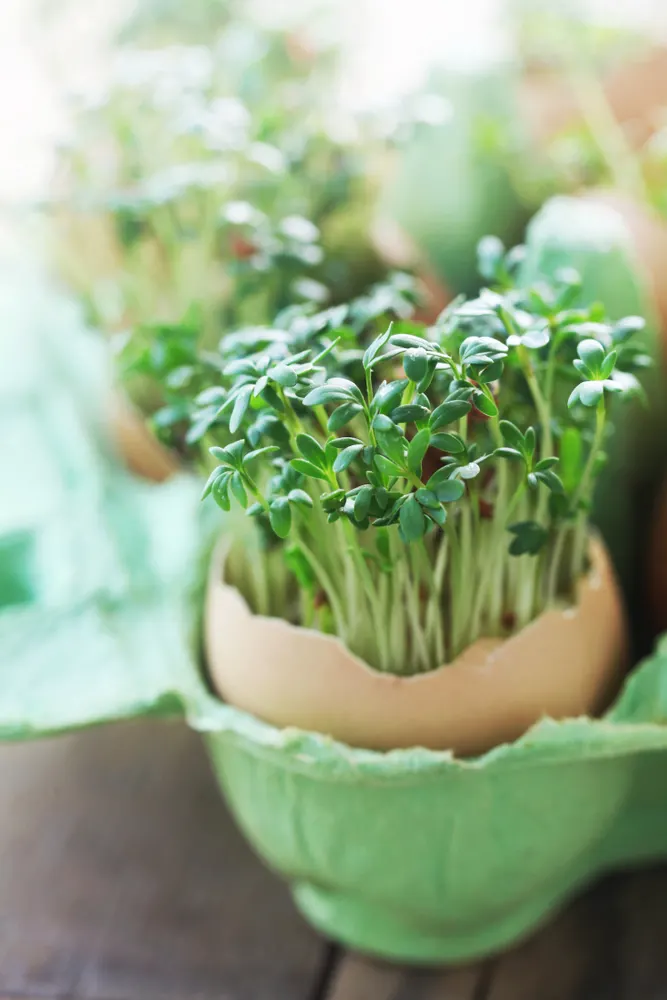
Cress is one of the fastest and easiest things to grow. In fact, you may already have done so when you were at school. I remember growing cress in eggshells when I was little. We drew faces on the eggshells and the cress grew from the top of the eggshell like hair. This is a fun activity for kids.
But even if you don’t have little children, cress is a very good crop to grow.
Sow seeds today and you could harvest cress in just a week or two. While very low in calories, cress is high in vitamins A and C and other essential nutrients. It has a pleasant peppery taste and is great in salads and sandwiches.
2. Cut-And-Come Again Lettuce
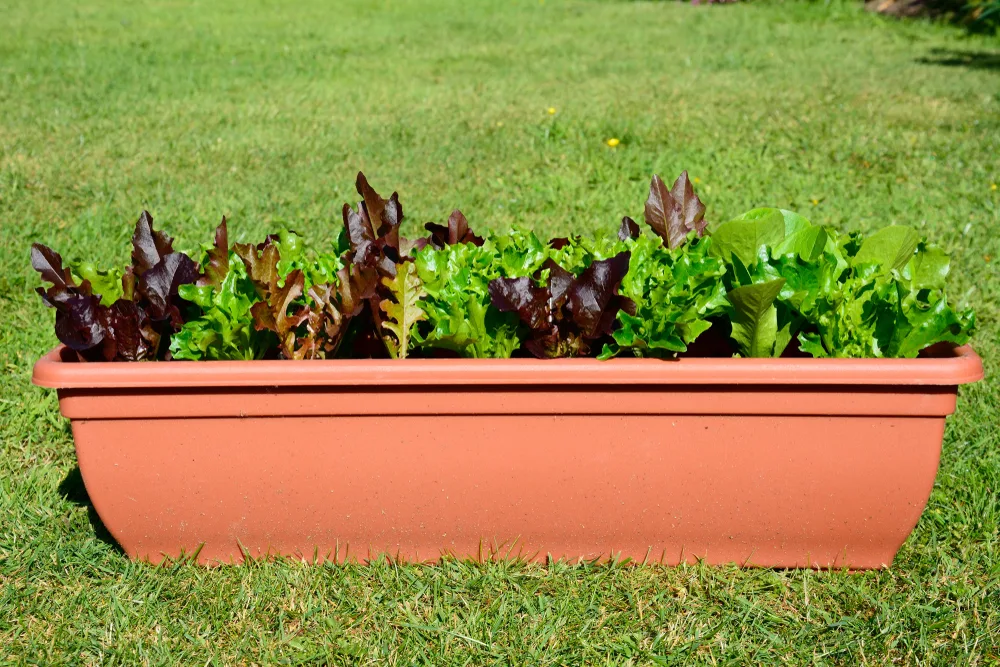
Lettuce is, of course, a very familiar crop for most of us. There are a huge range of different varieties to choose from.
For a quick crop, you are looking to sow loose leaf, cut-and-come-again varietals. As the name suggests, you can harvest leaves as required and new leaves will grow. So you can continue to crop these lettuces over quite a long period.
Loose leaf lettuce varieties come in a range of different colours, textures and tastes, so can add a lot of variety to spring salads. You can choose a mixed loose leaf seed selection, or opt for a particular cultivar.
You can begin to harvest small lettuce leaves for salads in as few as four weeks, and will be able to continue to harvest small quantities of leaves for several months to come.
Here’s our full guide with photos for planting, growing and harvesting cut-and-come-again lettuce.
3. Pak Choi
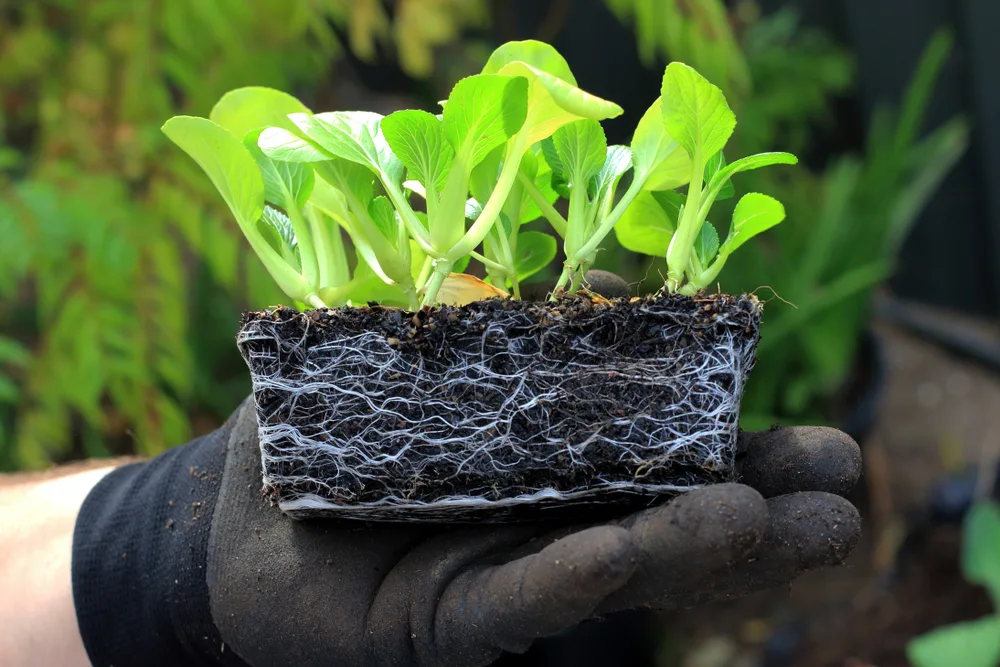
But lettuce is not the only leafy crop to consider. There are also plenty of Asian greens from which you can harvest the first small leaves in as few as four weeks in the right conditions. Pak choi, or bok choy, is the first example.
Like lettuce leaves, the young leaves are excellent in a salad or sandwich, and even when you harvest small quantities of leaves early, you can still let the plants grow on. Somewhat more mature plants (6-8 weeks) are excellent for stir fries and in many other ways.
4. Mizuna
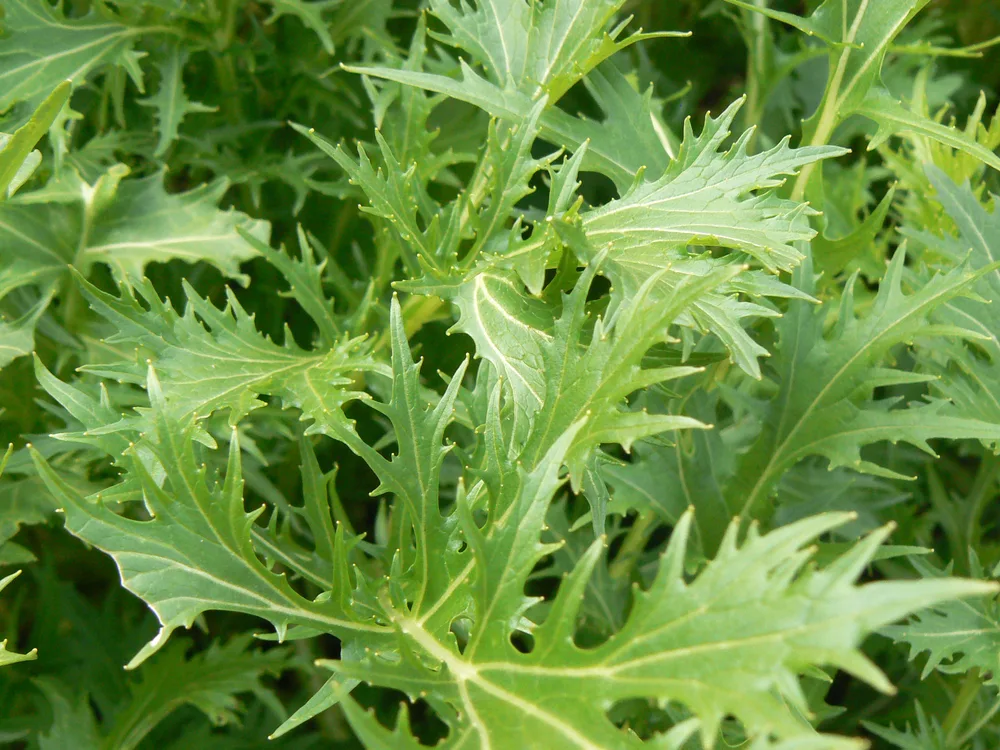
Another Asian green well worth your consideration is mizuna. This is a peppery leaf vegetable (in the Brassica family) and is another great cut-and-come-again crop.
Again, you can begin to take young leaves a few at a time from each plant in as few as four weeks.
5. Mibuna
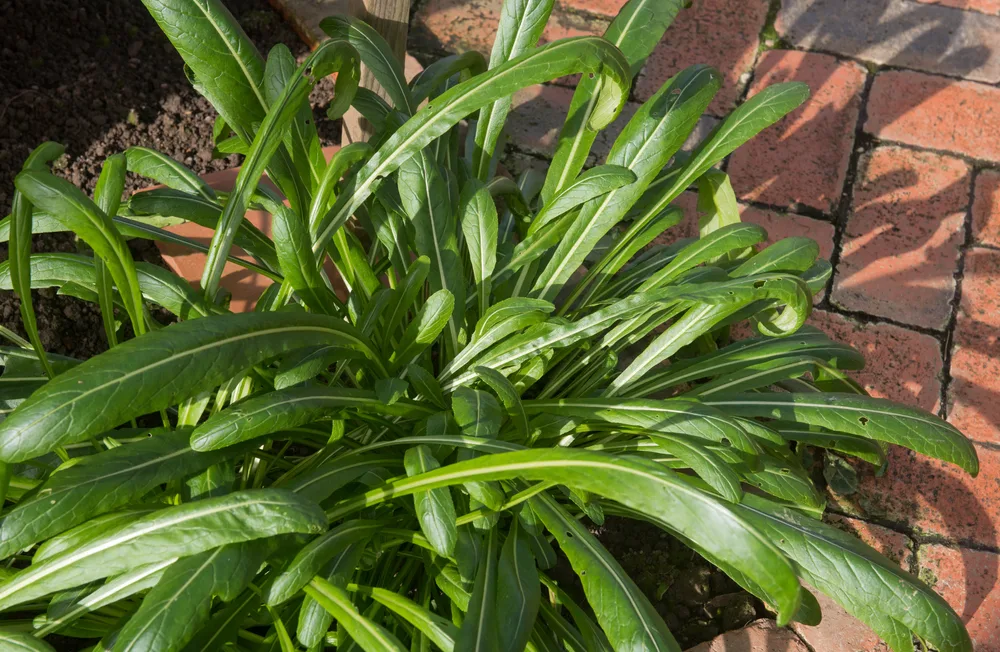
Closely related to mizuna, mibuna is a similar leafy green which can be grown and used in exactly the same way as the above. While mizuna has feathery leaves, mibuna’s leaves are long and thin. But the two taste very similar.
Again, you can begin to harvest a few small leaves within a month or so, and continue to harvest from the prolific plants over the months to come.
6. Mustard Greens
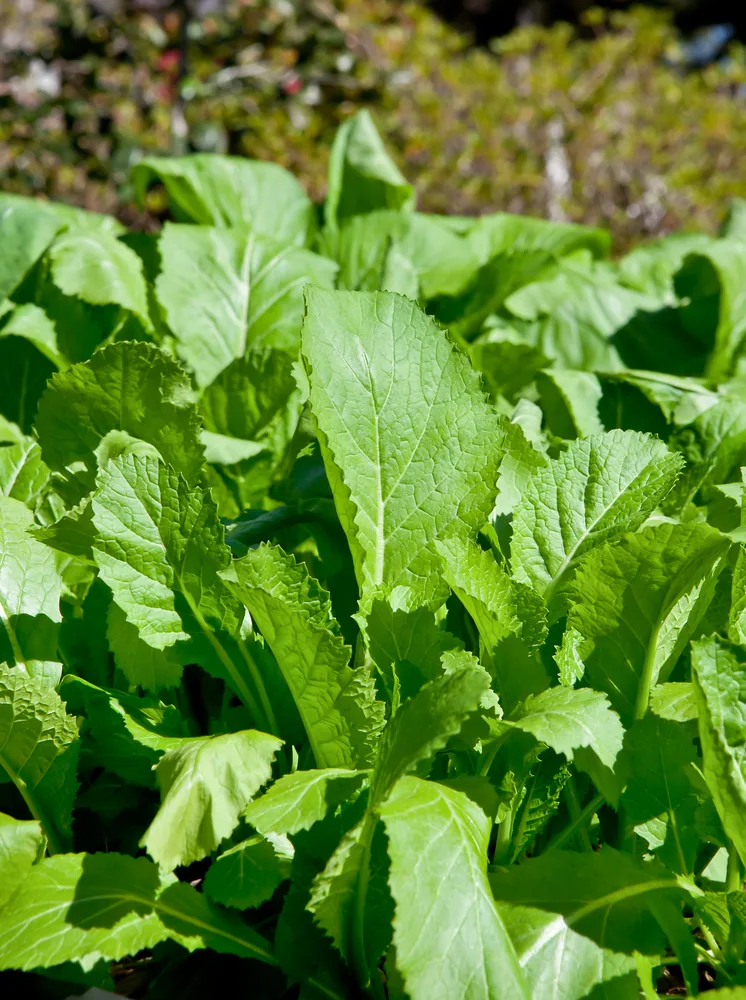
Mustard greens are another Brassica crop that you can grow for cut-and-come-again leaves from as little as four weeks from planting.
There are a number of different varieties to choose from for mixed salads, including green leaf varieties, and red/purple leaf varieties like ‘red lace’. The peppery and flavoursome leaves are another healthy addition to a home grown diet.
7. Other Microgreens From Brassicas
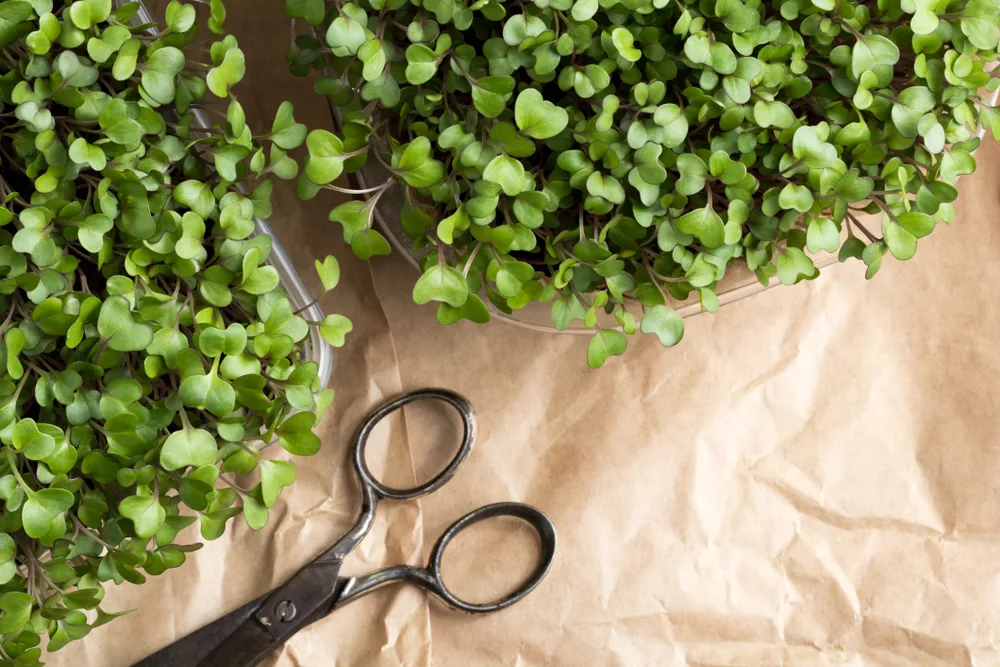
Brassica crops such as broccoli, kale, cabbages, kohlrabi etc.. will not reach full size for some months to come. But all of these crops can also be used to provide healthy and flavoursome micro-greens for your dinner plate from around a month from planting.
Brassica seedlings are crammed full of nutrients, so while you can also definitely prick out plenty of seedlings to grow on, you could also consider harvesting excess seeds as micro greens for a much quicker harvest.
8. Arugula
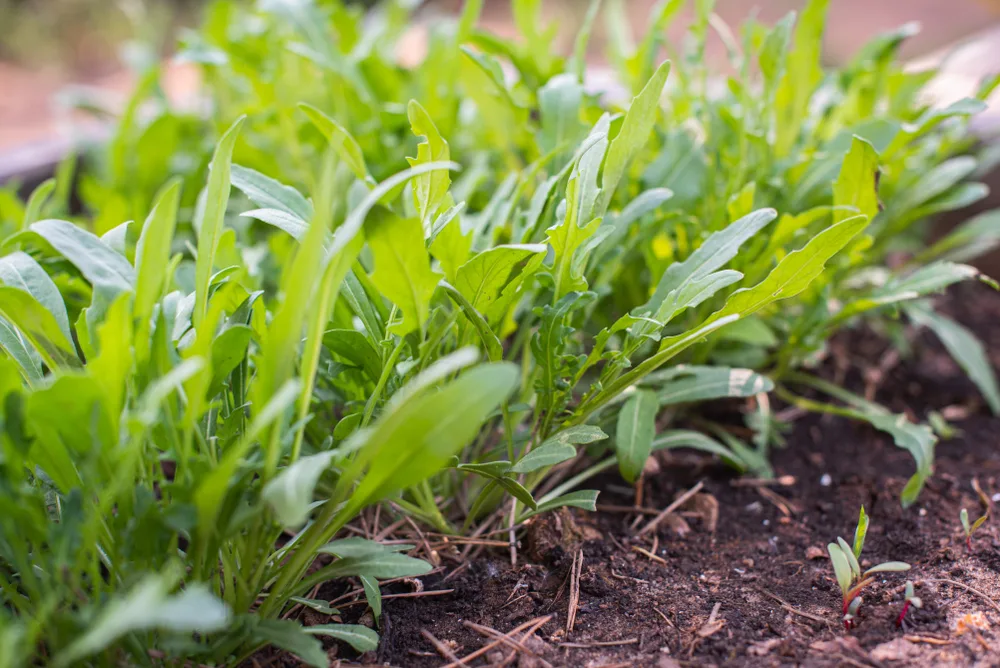
Arugula (rocket) is another leafy green that you should consider sowing for a quick cut-and-come again harvest from around 4 weeks time.
This is another peppery and flavoursome leaf vegetable that grows quickly and prolifically in a range of settings.
9. Baby Spinach
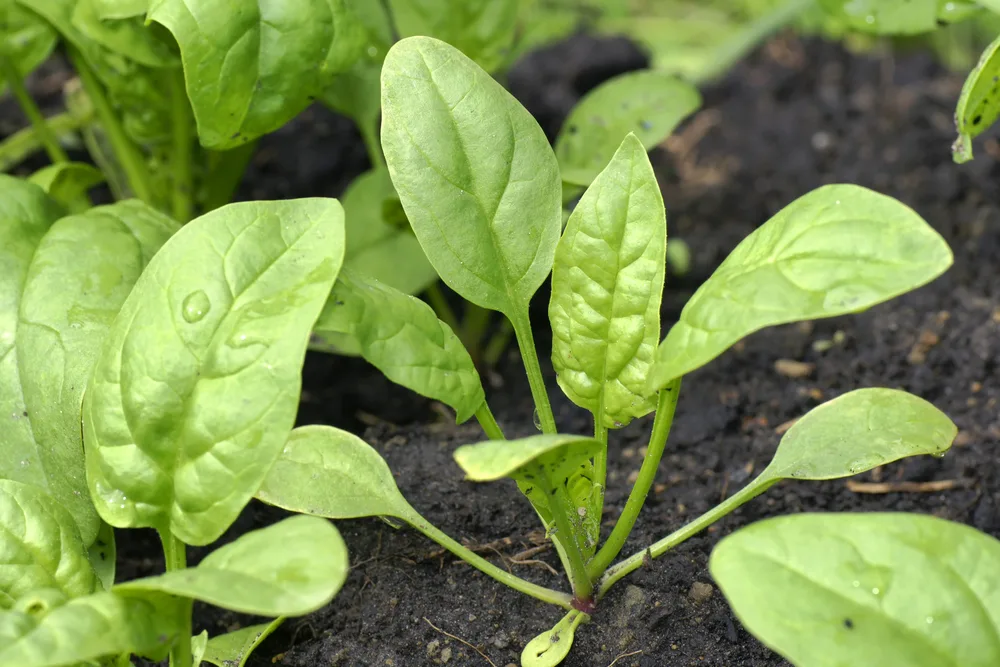
Spinach grows somewhat slower than the greens mentioned above. But nonetheless, you can expect to begin picking baby spinach leaves in just a month or so’s time.
Spinach is, perhaps, one of the most delicious of green vegetables, with a mild and pleasant flavour that lends itself perfectly to a wide range of dishes. True spinach and perpetual spinach are both excellent options that can both provide small quantities of fresh leaves from 4 weeks time.
10. Pea Shoots
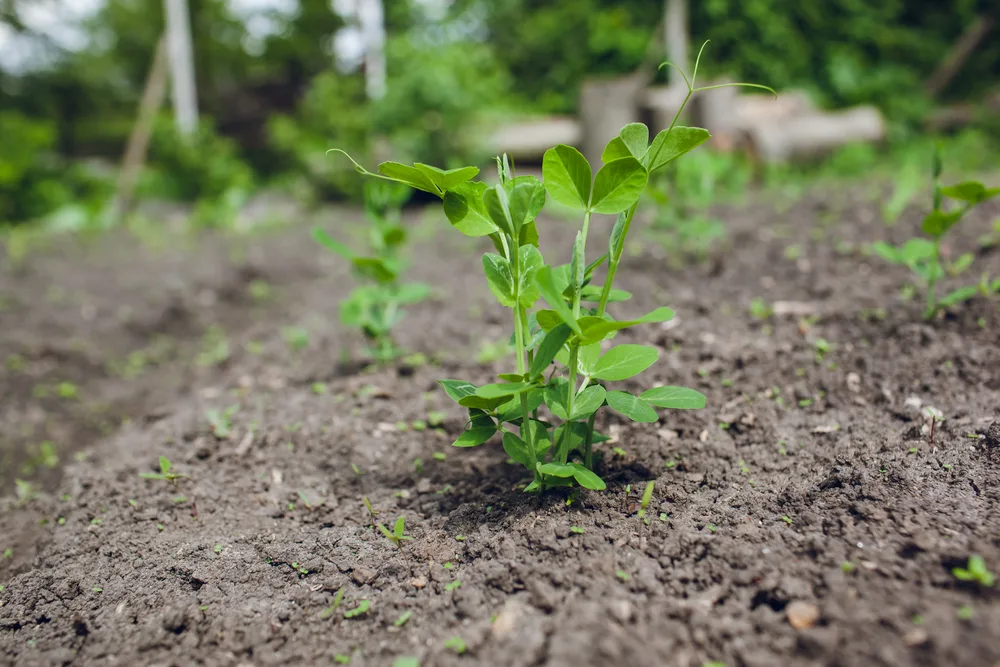
Another very fast-growing and delicious edible that can be grown pretty much all year round are pea shoots.
We may be more used to eating the seeds and pods of these plants. But the shoots and leaves are edible too and can provide a very quick crop.
Pea shoots are delicious in salads or as a simple side dish, with a delicate pea flavour. These can shoot up, and provide plenty of leafy greens well within a month.
11. Chard
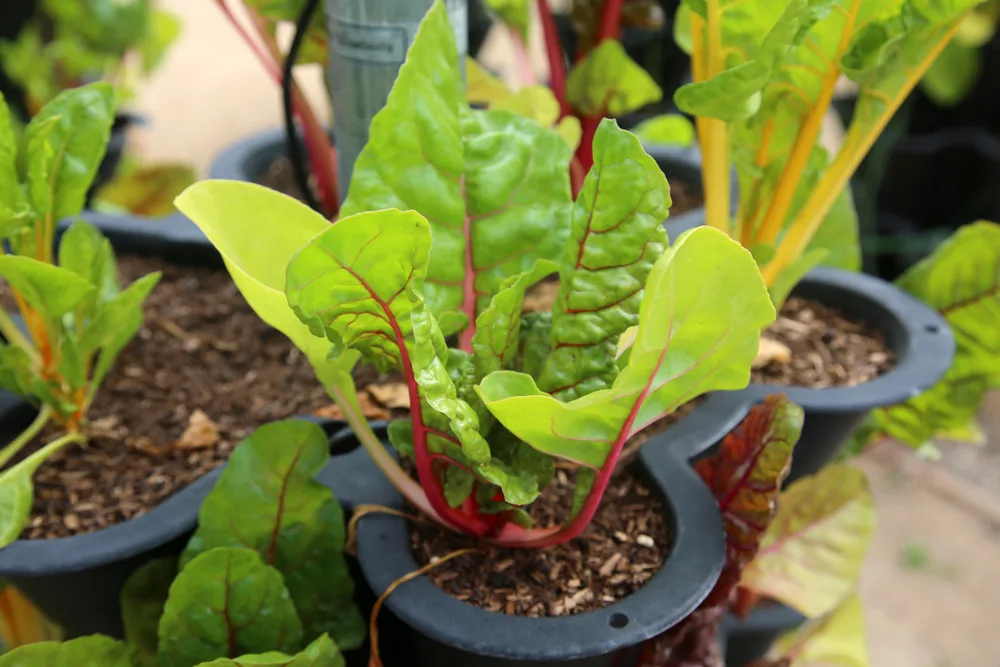
This is another great leafy green to grow on your windowsills or in your garden. Chard is yet another crop that will come again when you cut it.
While chard still won’t be very big a month from sowing, the tiny leaves can still be harvested in small quantities early in its growth. Of course, the plants will then continue to grow on to provide an abundance of greens and stems over the coming months.
12. Beet Greens
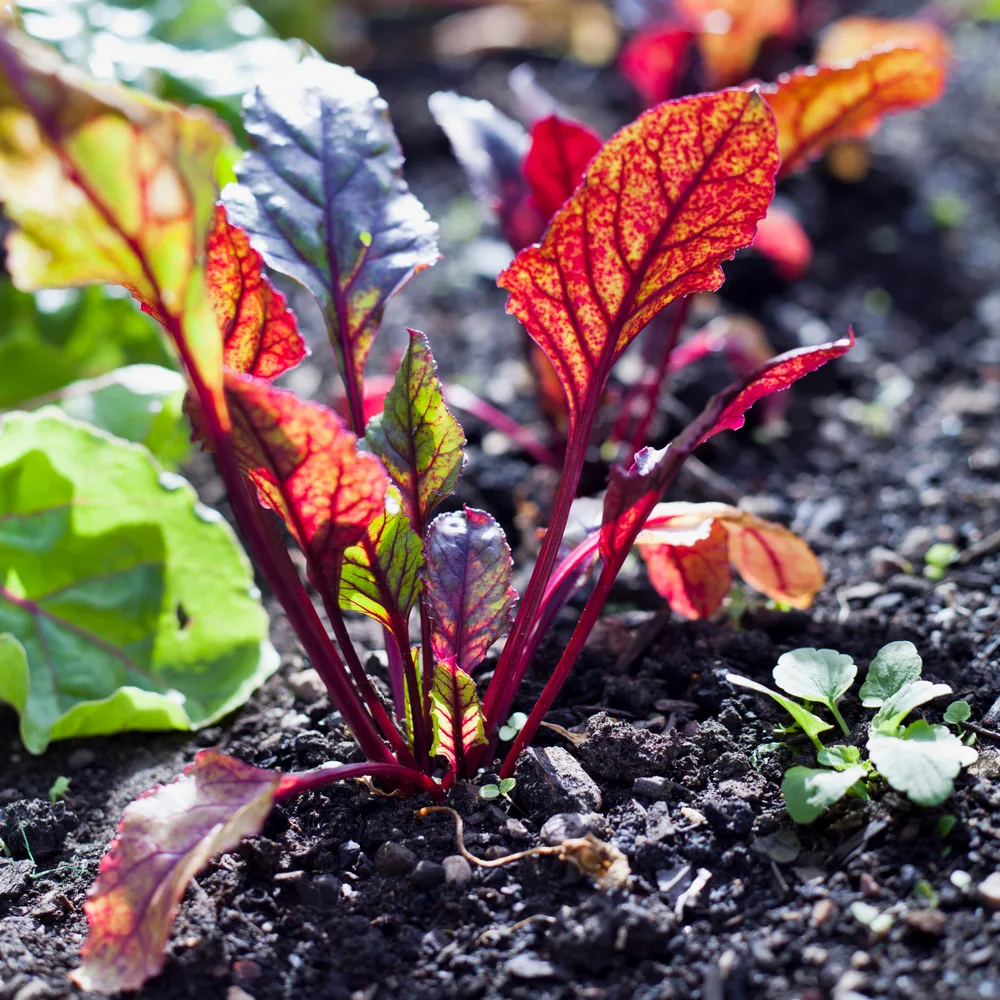
The baby beets sown now won’t be ready for harvest for their roots for another couple of months. But it is worth considering that you could also sow beets to harvest for their leaves much sooner.
Beet leaves are often discarded. But these can also be an edible crop (Very similar to chard.)
13. Radishes
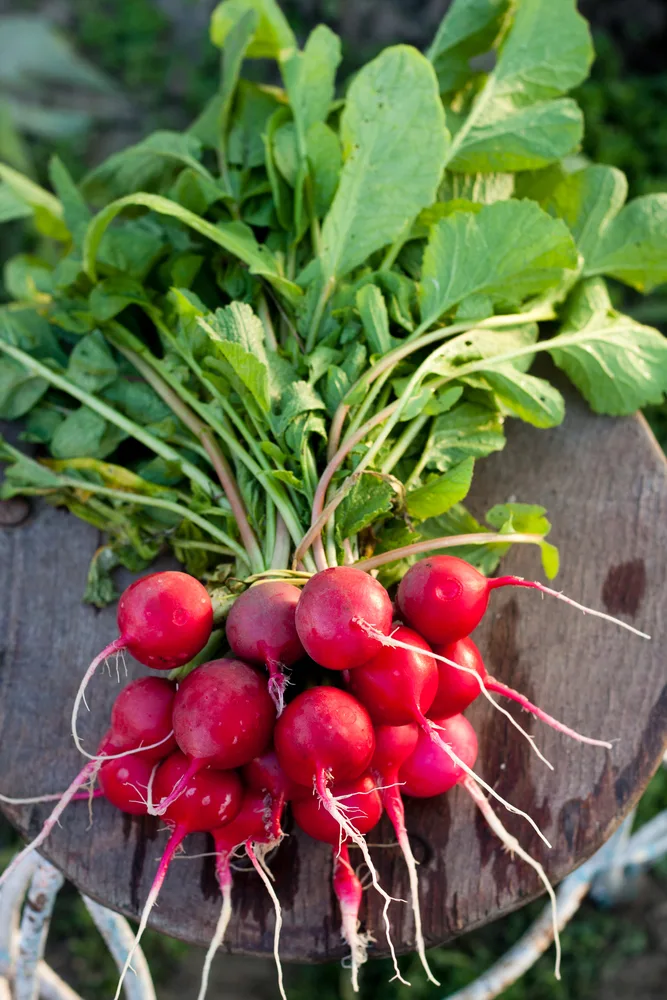
If you are a little bored with all those leafy greens – be sure to sow some radishes too.
You can harvest little radishes of certain varieties in as few as four to six weeks. Sow a few radishes little and often and you can make sure you have a good supply for salads throughout the season.
14. Turnips (Such as Market Express)
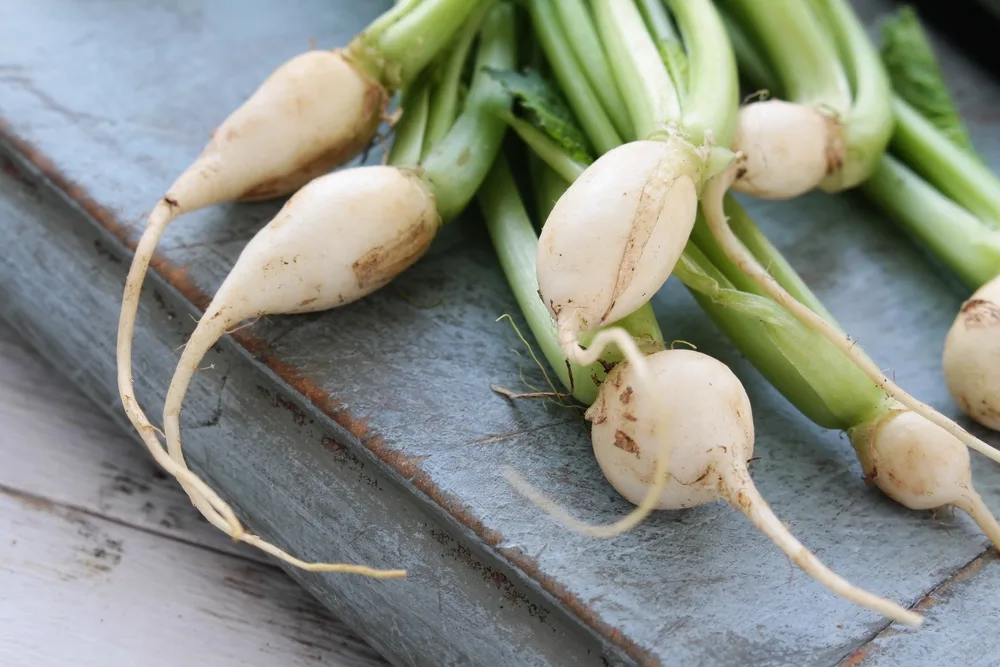
While larger turnips will obviously take much longer to grow, some fast-growing and smaller varietals can be ready for harvest while very small in as few as four-six weeks.
Market express is one potential option for a fast-growing turnip cultivar. But there are several other options to choose from.
Remember that as well as harvesting tiny roots, you can also harvest the leaves – these can be used just as you would use the leaves of other brassicas.
15. Green Onions (From Onion Sets)
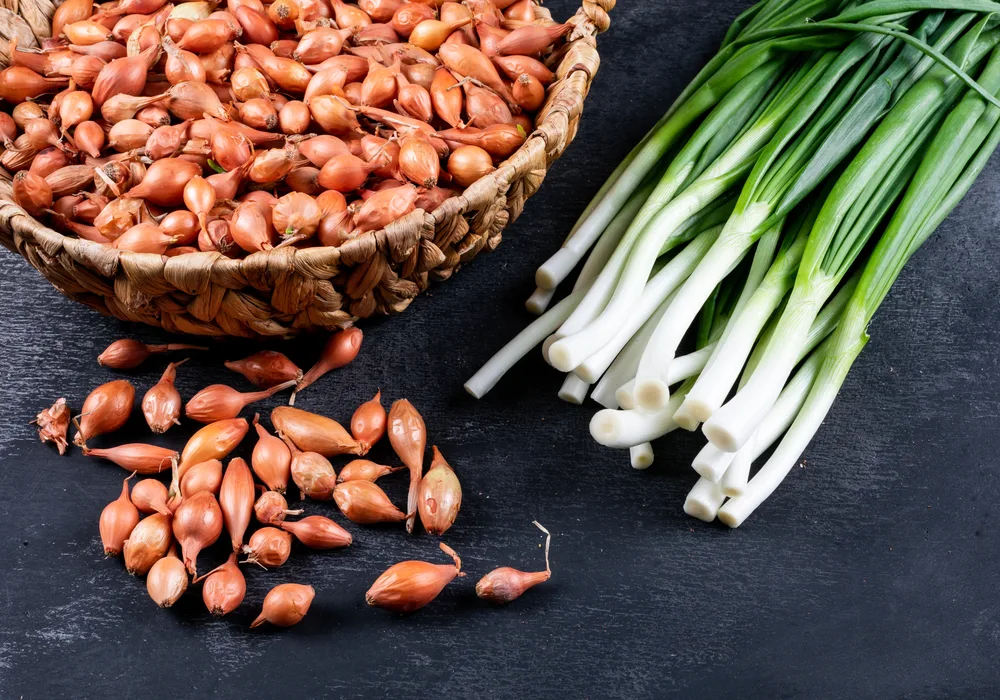
Finally, though not exactly growing from seed, you could also plant some onion sets (immature onion/ scallion bulbs) now for a quick supply of green onions. Simply chop off the tops as you need them, and these should continue to regrow.
Note: you can regrow spring onions or green onions from the base section. So if you buy some in the store, you can use that to grow more food.
It is also worthwhile noting that you can also regrow a range of other vegetables from scraps.
Other Options to Get Food Fast
In addition to sowing fast-growing crops, and regrowing vegetables from vegetable scraps, other ways to supplement your diet fast this spring include:
- Eating the weeds and other wild edibles – like wild garlic.
- Eating the leaves of certain trees.
- Exploring spring edibles in ornamental gardens. (Hostas are one excellent example, though there are also plenty of other edible flowers and other edible ornamental plants to consider.)
When you look around you, you may be surprised by how many food sources you find.
Growing your own does not always go according to plan. But by starting small and seeing results quickly, you are sure to be bitten by the gardening bug.
No matter how much space you have to grow your own, you will be able to find a whole host of exciting ways to start providing more right there at home for yourself and your family.

Get the famous Rural Sprout newsletter delivered to your inbox.
Including Sunday musings from our editor, Tracey, as well as “What’s Up Wednesday” our roundup of what’s in season and new article updates and alerts.


